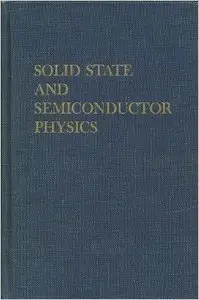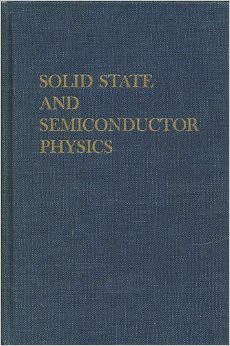"Solid State and Semiconductor Physics" by McKelvey
1982 | ISBN: 0898743966 | Pages: 528 | English | DJVU | 5 MB
1982 | ISBN: 0898743966 | Pages: 528 | English | DJVU | 5 MB
The treatment throughout is from the point of view of the physicist, although enough technical detail on such subjects as materials technology and crystal growth, semiconductor device fabrication, and device characteristics and circuitry is included to round out these aspects of the over-all picture and indicate what sources must be consulted in order to obtain more detailed information about those subjects. The material on p-n junction theory and semiconductor device analysis is intended to be quite complete and to present a comprehensive and detailed discussion of analytical techniques which are useful in this rather important but somewhat neglected area.
The choice of introductory topics in general solid state physics, in Chapters 1-8, includes only those subjects which are of central importance to semiconductor physics. The introductory section, therefore, is selective rather than comprehensive, although the material presented is about sufficient for a single-term intermediate solid state physics course.
The level of presentation is intermediate; the author has tried to go far beyond what can be accomplished in a qualitative way without any real use of quantum theory and statistical mechanics, while avoiding the formidable mathematical involvements of a full quantum-theoretical treatment. The line of approach is pragmatic rather than axiomatic, and a determined attempt has been made to present a physical as well as mathematical understanding of all the subject matter.
This book contains chapters on quantum mechanics and statistical mechanics. It should be noted, however, that these chapters are not intended to serve as comprehensive treatments of these topics, but only as brief introductory essays which suffice to provide enough working knowledge to enable the reader to follow the subsequent development and appreciate the physical significance of all that follows.
Fundamental principles, rather than technical details, are emphasized throughout. The particle approach, as embodied in the free-electron transport theory, has been relied upon heavily; the justification of this approach in the light of the quantum theory has been emphasized in Chapter 8. No mathematics beyond vector analysis and ordinary differential equations is required. Although partial differential equations and orthogonal function expansions are encountered on several occasions, the mathematical tools needed are developed on the spot.



